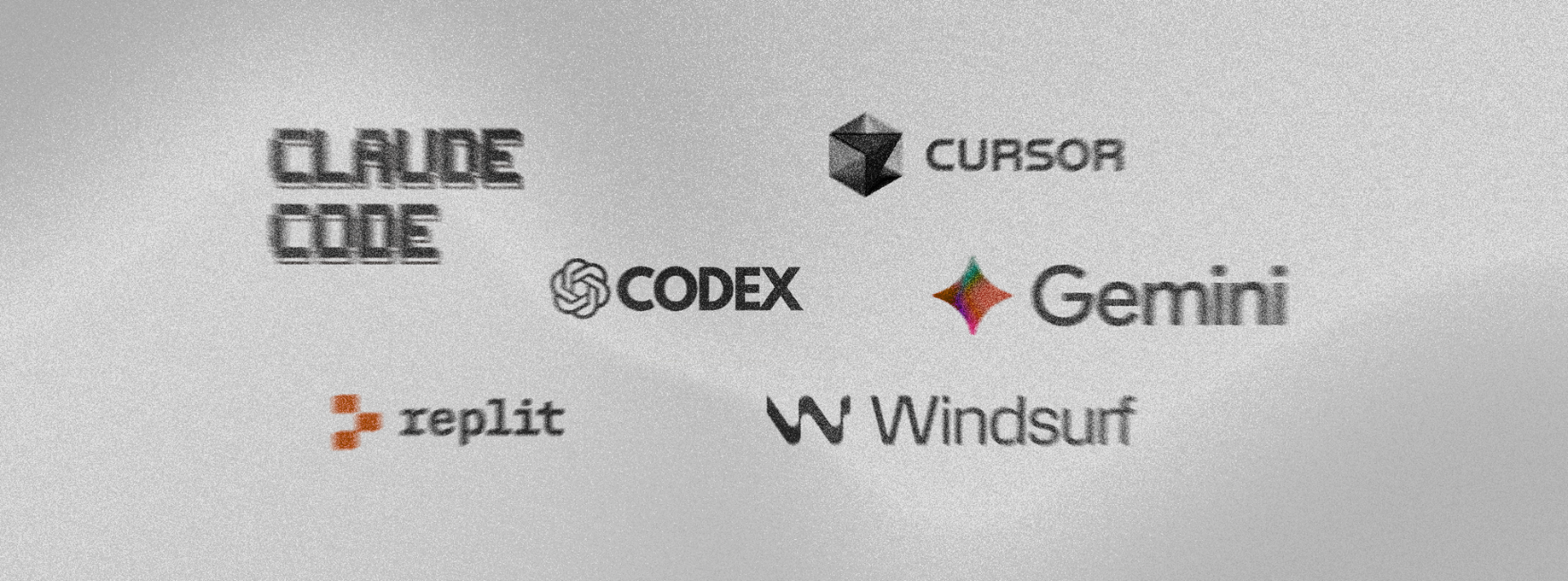Introduction
There used to be an old house right outside our office. Now, it's gone. The space has been cleared, and in its place, a construction company is building something much bigger. It's impossible not to notice too loud, too big, too many construction workers moving around. Every day.
And, let me remind you that at our company, we're a little obsessed with AI advancements, tools, trends so, naturally, we started asking ourselves: can AI help them? How? Could it really transform an industry as massive and traditional as construction?
And this sparked an idea for our newest blog!
Need convincing why you should continue reading?
Let's play a quick game first.
Look around you.
What do you see?
Chances are, you're surrounded by things that were built by the construction industry your office, the roads outside, the bridges you cross, your favorite coffee shop, restaurant And if your window is open while you work, take a moment to listen. You'll probably hear the distant hum of machinery, the clang of metal, or the rhythmic pounding of hammers
Yes. Construction is everywhere. You can see it, and hear it! It's the industry that literally builds our world.
This industry is massive. It's a $10 trillion global sector, and it's responsible for building everything. But despite its size, construction has been slow to adopt new technologies. The interesting thing is that for all its importance, construction hasn't changed much in decades. It's still slow, expensive, and sometimes dangerous.
So, what's the solution?
Could Artificial Intelligence (AI) be the answer? Can AI help build faster, cheaper, and safer? And more importantly, will construction companies and the people who run them embrace it?
Let's check some numbers
- The global construction market is expected to grow to $14.4 trillion by 2030 (source: Report by Next Move Strategy Consulting).
- There are over 7 million construction companies worldwide, with the majority being small and medium-sized businesses (source: IBISWorld).
- Construction projects are notorious for delays and cost overruns. A McKinsey report found that 98% of large construction projects experience delays or budget overruns, with average cost overruns of 80%.
These numbers paint a clear picture: construction is a vital industry, but it's also one that's ripe for disruption.
Meet the construction owner: a busy problem-solver
Whenever I'm trying to solve a problem, I have to put myself in someone else's shoes really understand their perspective so I can come up with ideas, and solutions that actually work for them.
So now imagining I am a construction owner. My day starts at 6 a.m., and I'm already juggling a dozen things. I've got a project deadline looming, a budget that's tighter than ever, and a team that's stretched thin. On top of that, I'm dealing with delays caused by bad weather, material shortages, and unexpected site issues. Sound stressful? It is.
Construction owners are the ultimate problem-solvers. They're the ones who make sure projects get done, no matter what. But they're also under a lot of pressure. They need to cut costs, meet deadlines, and deliver high-quality results all while keeping their workers safe - the most important part!
It would be nice if there was a tool that could help with all of that. A tool that could predict delays before they happen, optimize schedules, and even spot safety hazards. And maybe that solution is AI.
But what do construction owners think about it? Some are excited, while others are skeptical. Can a machine really understand the complexities of construction? Let's find out.
How AI is changing construction, through real-life examples
After some research, it turn out that AI is already making a difference in construction. Here are some real ways it's being used:
- Saving time and money
Let's say you're building a new office complex. Normally, creating the design and blueprints could take weeks or even months. But with AI-powered tools like Autodesk's generative design, you can input your requirements (materials, budget, etc.), and the software will generate hundreds of design options in minutes. One company used this technology to design a hospital, cutting costs by 20% and reducing energy use by 30%.
AI can also help with scheduling. Ir can analyze past projects and predict how long each task will take. It can even flag potential delays before they happen. According to Deloitte, AI could reduce project timelines by 10-30% and cut costs by 10-20%. That's a big deal for an industry where time is money.
- Making construction sites safer
Construction sites can be dangerous places. But AI is helping to change that. For example, some companies are using AI-powered cameras to monitor sites in real-time. These cameras can spot safety hazards, like workers not wearing helmets or unsafe scaffolding, and alert supervisors immediately.
Other companies are using wearable devices that track workers' health. If someone is overheating or showing signs of fatigue, the device sends an alert. According to Accenture, AI could reduce workplace injuries by up to 20%. That's not just good for business it's saving lives.
- Predicting Problems before they happen
One of the biggest headaches in construction is dealing with unexpected issues. But AI can help with that too. For example, sensors embedded in buildings can monitor things like temperature, humidity, and structural stress. If something's not right, the system sends an alert. This is called predictive maintenance, and it's a game-changer.
A great example is Skanska, a construction company that used AI to monitor a bridge in real-time. The system detected a small issue before it became a big problem, saving the company millions in repair costs.
What does the future look like?
Honestly, it's really hard for me to imagine a construction site that feels like it's from the future. But let's try. :)
Closing my eyes and picturing: I'm standing on a site, but it's not the usual construction mess. It's calm and organized. Above me, drones are flying around, scanning everything and creating 3D maps that update in real-time. It's like having a live blueprint that everyone can check.
In one corner, a robotic arm is laying bricks steady and precise, no mistakes. Nearby, another machine is pouring concrete, smooth and perfect, faster than a human crew could do it.
But what really stands out is the system in the office. It's quietly analyzing data from sensors all over the site, tracking progress, and spotting problems before they get big. It's super organized!
This isn't some far-off idea it's happening now. And honestly, I'm not surprised. The more I read about AI, the more I see its potential everywhere not just in construction.
Companies like Built Robotics are developing autonomous construction equipment, while startups like OpenSpace are using AI to create digital twins of construction sites.
And the best part? It won't replace people it will make their jobs easier.
The Pros and Cons of AI in Construction
Like any technology, AI has its upsides and downsides.
The Good Stuff:
- Efficiency: AI can automate boring, repetitive tasks, freeing up workers to focus on more important things.
- Cost Savings: By reducing delays and optimizing resources, AI can save companies a lot of money.
- Safety: AI can help prevent accidents and make construction sites safer for everyone.
The Not-So-Good Stuff:
- Cost of Adoption: Implementing AI can be expensive, especially for smaller companies.
- Learning Curve: Workers need to be trained to use AI tools, and that takes time.
- Trust Issues: Can AI really replace human judgment? What happens if it makes a mistake?
The Human touch is still important
Here's the thing: AI is powerful, but it's not perfect. Construction is a hands-on industry, and there will always be a need for human expertise. AI can't replace the creativity of an architect or the problem-solving skills of a project manager. Instead, it should be seen as a tool that enhances human capabilities.
Can we trust AI in construction?
This is a big question. AI can make mistakes, especially if it's trained on incomplete or biased data. That's why it's important to use AI as a supplement, not a replacement, for human judgment. Companies should also be transparent about how they're using AI and make sure workers are involved in the process.
So, can AI build a better world?
The answer is yes but with some caveats. AI has the potential to revolutionize construction, making it faster, cheaper, and safer. But it's not a magic solution. It's a tool, and like any tool, it's only as good as the people using it.
The future of construction is here, and it's being built with AI. But it's up to the industry and the people in it to decide how far they want to go. Will they embrace the change, or stick to the old ways? Only time will tell.
Interesting? Well, if you want to learn more about AI, do not miss our previous blogs!







.svg)